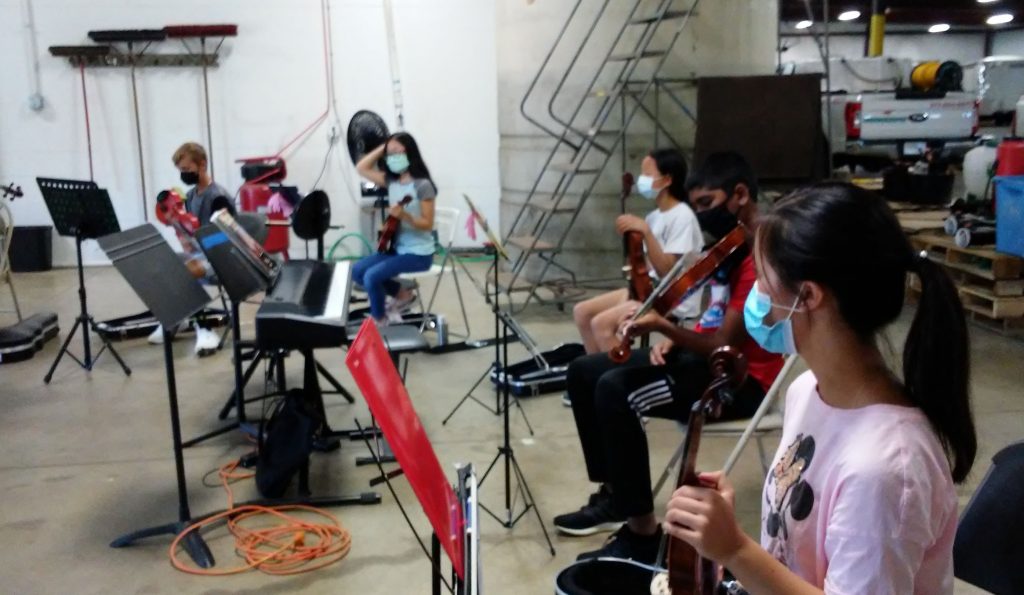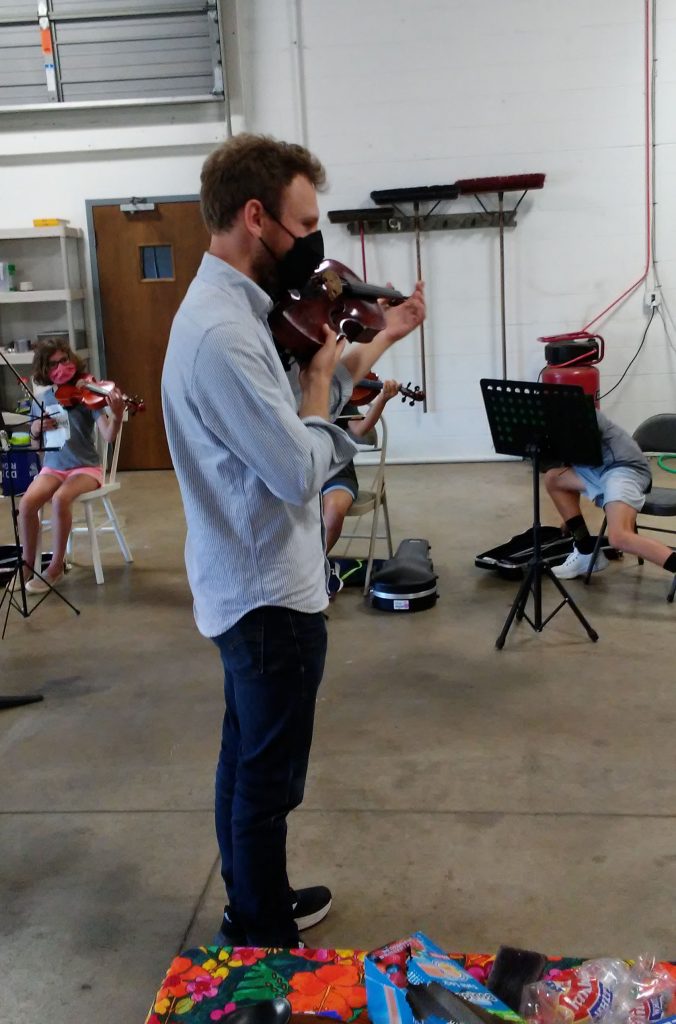Covid Diaries: Catch-up Lessons
While Covid has obviously impacted our lives as musicians, those of us who teach have found that our methods needed to be revised for a world where physical distance would be the norm.
Violist Terry Langdon found a way to not only provide lessons for her students remotely, but also recognized the need for a course of in-person catch-up classes. She shares both of these stories in this Covid Diary segment:

In the Winter of 2020-21, I used a variety of different virtual environments to teach viola remotely (with Zoom my clear favorite in terms of dependability and sound quality). Despite the distance, I still felt I was able to make sure that my students were pulling a straight bow; to listen to and critique scales for pitch, accurate shifting, evenness, and speed; and teach new etudes involving special bow strokes, bow distribution, and playing in unfamiliar keys. Even posture and set-up were somewhat correctable remotely!
One particularly dark and grim winter night, a student and I changed a string over Zoom, which took an agonizing forty-five minutes. On a very basic level, the Zoom lessons made sure that there was some practicing going on, and that their instruments were properly tuned.
I estimate that about twenty hours of my time were saved by Zoom lessons because the students showed up on camera with their instruments already unpacked and their music on the stand! I found that I was very happy to see the students each week over Zoom. They were a small corner of normalcy for me in a very scary world.
However, many aspects of the Zoom lessons were less than optimal. The amount of emotional energy with which the teacher can inspire a student over Zoom is limited. It is not possible to hear the exact sound the student is producing and improve upon it. Likewise, intonation is only discerned as an approximation. It was also difficult to make sure shoulder rests were in the best place, bows were properly rosined, and that the student was still playing the correctly sized instrument.
In June, I began teaching lessons in person at my home and at Quattro Studios. It is wonderful to be able to interact more completely. I am grateful to be able to speak with my students’ parents again. I enjoy finding out how other parts of the student’s activities are going.
We all continue to wear masks during the live lessons, and I make sure to have as much air circulating as possible. I also maintain as much distance as I can—at least six feet, and I am much less likely to correct a bow hold by touching the student’s hand than I was pre-pandemic.
These safety protocols were very important as fellow ISO Violist Zak Collins and I taught a week of Covid Viola Catch-up Classes in a warehouse in Westfield this summer.

Viola students physically distanced in the Westfield warehouse 
Zak Collins leading a viola catch-up class
Zak and I organized our live Viola Catch-up classes over five successive days, introducing the main concepts on day one and then elaborating and reinforcing them on following days. The week culminated with a class performance for all the families of the students on our final day.
We focused heavily on the aspects of playing which had been hard to see during remote lessons, beginning with standing posture before transferring those ideas to sitting posture. We also checked shoulder rest positions, explained and demonstrated proper bow rosining, tuning our instruments, and talked about the optimal tautness for the bow hair.
I even figured out a way for the students to remember their optimal bow hold using surgical gloves and sharpies: I then set up their hands with the gloves on and marked all the contact points with the sharpie. Magic! It saves a ton of time and frustration.
The class time went by very quickly, and the students looked and sounded very good. Returning to live lessons turned out to be easier than expected: problems are identified faster, and a variety of solutions can be tried in much less time. It is also possible to pick up on small cues about the student’s affection or lack thereof for a certain musical work or style, and about roadblocks to their playing they may be facing.We were grateful to be able to remind students in real time over and over of the best practices and believe that we have given them a life-long blueprint for efficient and healthy use of their bodies for any activity. I hope live lessons can continue!